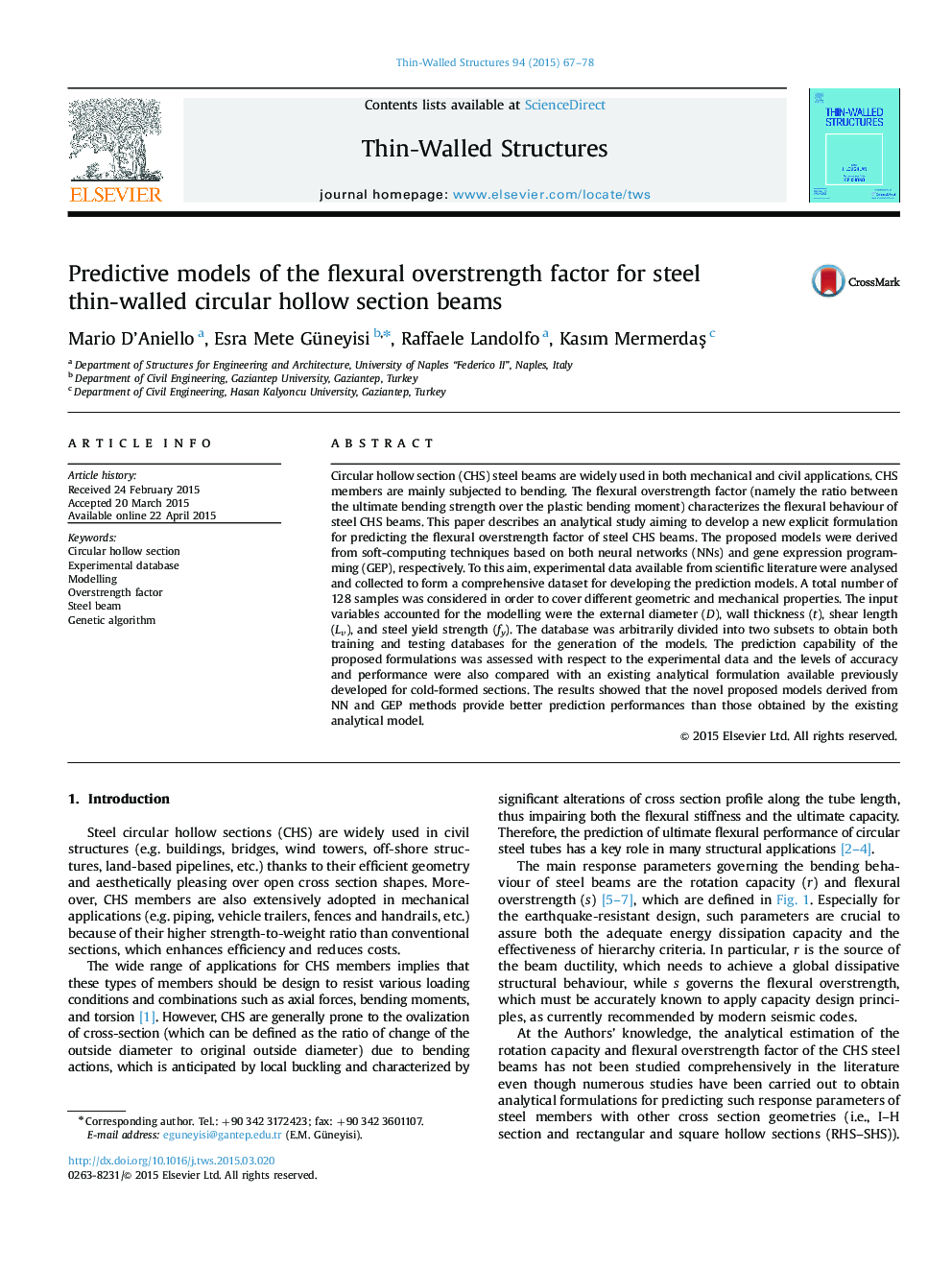| Article ID | Journal | Published Year | Pages | File Type |
|---|---|---|---|---|
| 308514 | Thin-Walled Structures | 2015 | 12 Pages |
•Flexural overstrength (s) of circular hollow section steel beams was investigated.•Analytical models to predict s value were proposed.•Experimental database (128 data samples) was used for generation of the models.•Models exhibited good agreement with test results.•Performances of the proposed models were compared with that of an existing model.
Circular hollow section (CHS) steel beams are widely used in both mechanical and civil applications. CHS members are mainly subjected to bending. The flexural overstrength factor (namely the ratio between the ultimate bending strength over the plastic bending moment) characterizes the flexural behaviour of steel CHS beams. This paper describes an analytical study aiming to develop a new explicit formulation for predicting the flexural overstrength factor of steel CHS beams. The proposed models were derived from soft-computing techniques based on both neural networks (NNs) and gene expression programming (GEP), respectively. To this aim, experimental data available from scientific literature were analysed and collected to form a comprehensive dataset for developing the prediction models. A total number of 128 samples was considered in order to cover different geometric and mechanical properties. The input variables accounted for the modelling were the external diameter (D), wall thickness (t), shear length (Lv), and steel yield strength (fy). The database was arbitrarily divided into two subsets to obtain both training and testing databases for the generation of the models. The prediction capability of the proposed formulations was assessed with respect to the experimental data and the levels of accuracy and performance were also compared with an existing analytical formulation available previously developed for cold-formed sections. The results showed that the novel proposed models derived from NN and GEP methods provide better prediction performances than those obtained by the existing analytical model.
